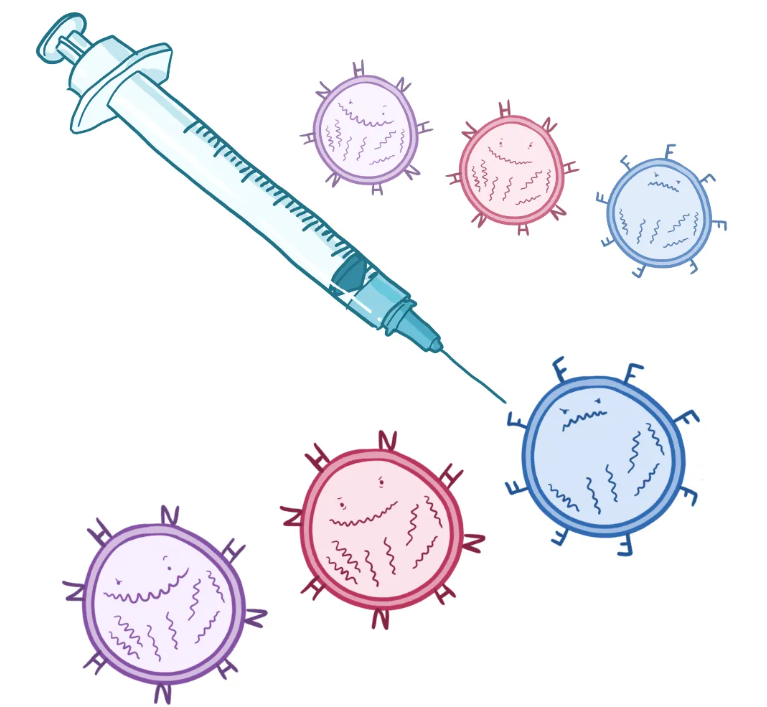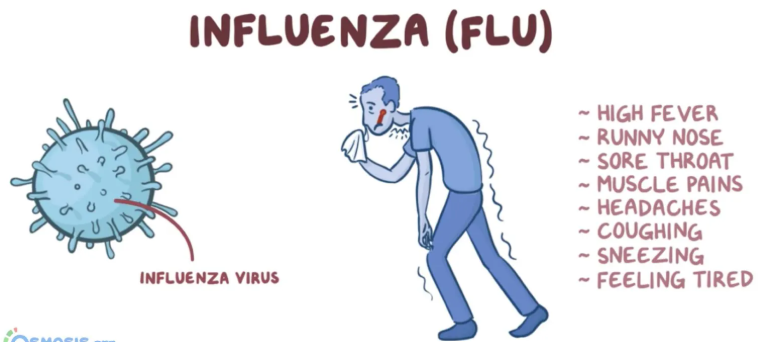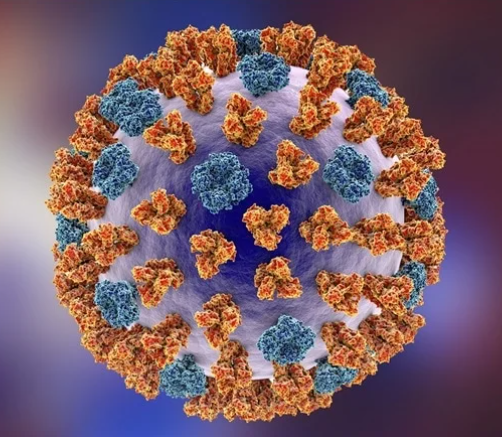Influenza (Flu) is an infectious disease caused by influenza viruses that attack the respiratory system, including the nose, throat, and lungs. It spreads easily from person to person through droplets in the air or by touching contaminated surfaces. Unlike the common cold, the flu usually begins suddenly and can cause moderate to severe illness, sometimes leading to complications such as pneumonia in high-risk groups.

The causes of influenza (the flu)
1. The Virus
- Influenza is caused by influenza viruses, which belong to the Orthomyxoviridae family.
- There are three main types that infect humans:
- Type A: Can infect humans and animals; often causes seasonal epidemics and pandemics.
- Type B: Mostly infects humans; usually causes seasonal epidemics.
- Type C: Mild respiratory infections; less common.
2. How Infection Occurs
- Airborne droplets: When an infected person coughs, sneezes, or talks, tiny droplets containing the virus can be inhaled by others.
- Direct contact: Touching a person who is infected (e.g., shaking hands) and then touching your mouth, nose, or eyes.
- Contaminated surfaces: Viruses can survive on surfaces for several hours; touching these surfaces and then touching your face can lead to infection.
3. Risk Factors
- Close contact with infected individuals.
- Weak or compromised immune system.
- Young children, elderly adults, and people with chronic illnesses (like asthma or diabetes) are more susceptible.

The Symptoms of influenza (the flu)
Common Symptoms
- Fever: Often sudden and high.
- Chills: Shivering and sweating.
- Fatigue: Feeling very tired and weak.
- Muscle and joint aches: Body pains, especially in the back, arms, and legs.
- Headache: Can be moderate to severe.
- Cough: Usually dry and persistent.
- Sore throat
- Runny or stuffy nose
- Loss of appetite
Less Common Symptoms
- Nausea, vomiting, or diarrhea (more common in children).
- Dizziness or lightheadedness.
Onset and Duration
- Symptoms start suddenly.
- Most people recover within 5–7 days, but fatigue and weakness can last longer.
- Complications (like pneumonia) can occur in high-risk individuals.

The Treatment of influenza (the flu):
1. Supportive Care (Symptom Relief)
Most flu cases resolve on their own, so treatment focuses on relieving symptoms:
- Rest: Helps your immune system fight the infection.
- Fluids: Drink water, herbal teas, or soups to prevent dehydration.
- Fever and pain relief: Over-the-counter medicines such as acetaminophen (paracetamol) or ibuprofen can reduce fever, aches, and headaches.
- Cough relief: Use honey, warm drinks, or cough medications for dry cough.
2. Antiviral Medications
- When prescribed: Especially for people at high risk (young children, elderly, pregnant women, or those with chronic illnesses) or if started within 48 hours of symptom onset.
- Common antivirals:
- Oseltamivir (Tamiflu)
- Zanamivir (Relenza)
- Peramivir (Rapivab)
- Effect: Can reduce symptom severity and duration, and lower risk of complications.
3. Home Remedies
- Gargling salt water for sore throat.
- Using humidifiers to ease congestion.
- Eating light, nutritious foods to support recovery.

